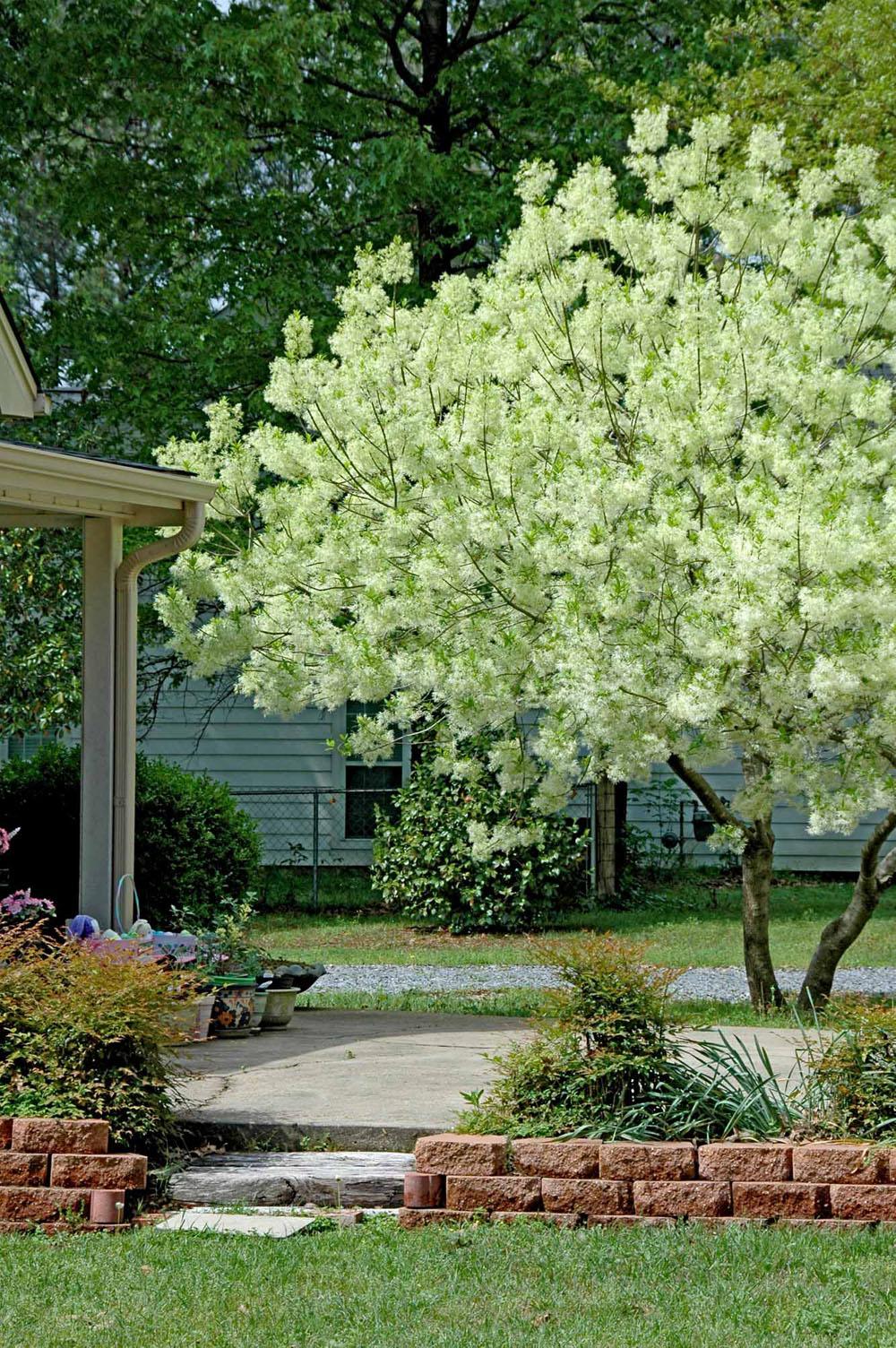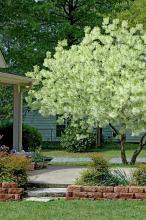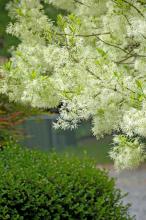Information Possibly Outdated
The information presented on this page was originally released on April 12, 2007. It may not be outdated, but please search our site for more current information. If you plan to quote or reference this information in a publication, please check with the Extension specialist or author before proceeding.
Grancy Graybeards star in landscapes nationwide
By Norman Winter
MSU Horticulturist
Central Mississippi Research & Extension Center
It's hard to believe that a native, spring-blooming tree can be so passionately loved from the Gulf Coast all the way to Pennsylvania and New York, but that is how people feel for the Grancy Graybeard.
They are known as Old Man's Beard or white fringe tree in some areas. It is in glorious bloom now in the lower South and as spring arrives further north, it will bring joy throughout the rest of the states.
Botanically speaking, Grancy Graybeard is Chionanthus virginicus. The name Chionanthus comes from the Greek words meaning “snow flower.”
It is considered a large shrub or small tree, reaching about 20 feet tall. It often develops a multi-trunk that makes it among the more picturesque trees in the spring landscape.
Grancy Graybeard's stature allows it to be a stand-alone specimen or an accent, but to combine it in a bed with other spring bloomers is like creating a fine piece of artwork.
In the South, it creates unparalleled beauty when combined with Southern Indica azaleas like Pride of Mobile, Formosa or George Lindley Tabor. It would also work with the incredibly colorful Hershey's Red or some native, fiery-orange selections.
Grancy Graybeard produces glistening white, fringe-like flowers by the thousands. When backlit by the sun or even hit by nighttime landscape lighting, it can take your breath away.
The flowers are not the only attraction for these native plants. Birds relish the small, blue fruits formed in the summer. The large, oval leaves add another landscape attribute by turning yellow in the fall.
The downside is that these plants are not available in huge quantities. Gardens centers do their part to have them on hand every spring, but they usually don't have enough to meet demand. So if this sounds like a tree you would like to have, go early this season to your garden center.
When you get your tree, plant it right. Choose a site in full sun to partial shade. Plant it in moist, fertile soil that is well drained. Dig the planting hole twice as large as the rootball, but no deeper. The rootball's top should be even with the soil line.
If by some chance you find one available later in the summer, form a 4-inch tall berm outside the rootball area. The berm should be able to hold 5 gallons of water. After planting, water deeply and apply mulch. Remove the berm after the first year.
Once you have a Grancy Graybeard, feed in late winter with an application of a balanced fertilizer like an 8-8-8 at a rate of 1 pound per 100-square feet of planted area (the area from the trunk to just outside the canopy of the tree).
It's great when one of the prettiest trees in the spring landscape is a native. Let's do our part to plant more of them.









